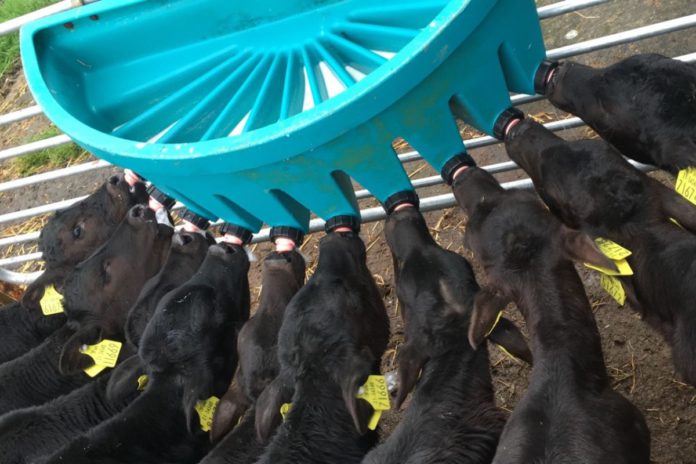Milk Replacer: Key ingredients and prices
According to Dr George Ramsbottom, there are four “non-negotiables” for milk replacer specifications.
During a recent Teagasc webinar on milk replacers, he listed these, which AHI’s technical working group has officially agreed, as:
- Protein content: 23-26%: Particularly for young calves, proteins should be from milk-derived sources for a “quality” amino acid profile to ensure “good” growth;
- Fat content: 16-20% – energy source;
- Ash content: 7-9%;
- Fibre content: <0.1%: “If there is a high fibre content, over 0.1%, there is a good chance that some of the protein sources are plant-derived. The AHI technical working group recommendation is that fibre content should be very low. If it is, in general, you are getting a high-quality milk replacer that is milk protein-derived (whey or skimmed milk powder.
Calculating the cost of milk replacer
According to recent costings that That’s Farming, received, at the time of writing, there is a notable variation in milk replacer costs.
We priced several outlets for 20kg milk replacer products and were quoted as high as €58-€65/bag; however, most generally fell around the €50-€53/bag mark.
When purchasing milk replacer, Ramsbottom urgers calf rearers to “look at the spec and buy on the spec”. “If the spec is right and they are relatively good value, go for them.”
He provided farmers with costings: “Using a ball-park figure of €58/bag (20kg), assuming a mixing rate of 125g/L (common for twice a day), a 20kg bag of the powder will make 160L of milk replacer.”
“At the cost of €58/€160L, the cost is 36.25c/L before water, heating and mixing costs are accounted for.”
“You are talking about a ball-park figure of 35-40c/L for powder that you will be using in a milk replacer format, excluding water, heating, or mixing costs. It is up about 20% on last year,” he added.
Differences between milk and milk replacers
The dairy specialist then went on to discuss the main differences between milk and milk replacers.
Firstly, he told farmers that milk replacers have lower energy content than whole milk.
He explained that the reason for this is that a typical milk replacer will have an oil/fat content of 16-20%, while whole milk, more typically, will have a fat content of 25%, which drives the energy content of the milk. So, typically, he added, you will have a slightly lower energy content than whole milk.
He informed farmers that there are “huge variations” between products and advised them to read labels before investing.
He stressed that non-milk proteins are not suitable for very young calves, and farmers should, therefore, look for whey or skim in ingredient lists.
Lastly, farmers pushing for higher growth rates will need replacers that have protein values at the upper end to drive bone growth instead of fat.
Other articles on That’s Farming:





